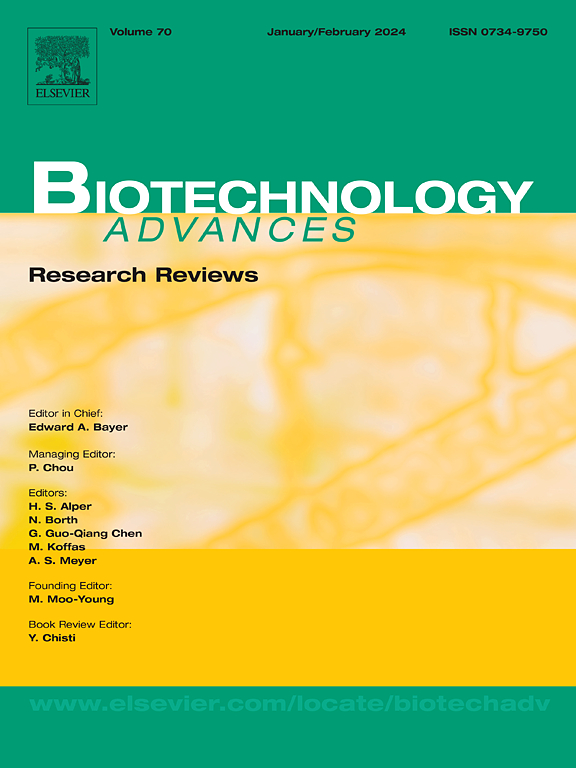重新构想人类细胞培养基:挑战、创新和未来方向。
IF 12.1
1区 工程技术
Q1 BIOTECHNOLOGY & APPLIED MICROBIOLOGY
引用次数: 0
摘要
优化培养基的发展对人类细胞培养的进步至关重要,是再生医学、细胞疗法和个性化医疗的基础。虽然Eagle’s Minimum Essential Medium (MEM)和Dulbecco’s Modified Eagle Medium (DMEM)等基础配方在历史上为重要的生物学研究提供了支持,但这些培养基主要是为非人类细胞设计的,不能充分满足人类细胞独特的代谢和功能需求。这篇综述考察了细胞培养基的发展,确定了在可重复性、可扩展性和伦理问题上的持续挑战,特别是关于对动物来源成分(如胎牛血清(FBS))的依赖。我们强调无血清和化学定义介质的创新,通过增强一致性、符合良好生产规范和解决道德问题,提供了有希望的替代方案。新兴方法,包括基于组学的分析、高通量筛选和人工智能(AI)驱动的媒体设计,正在通过精确定制特定人类细胞类型和患者来源细胞的需求来重塑媒体优化。此外,我们还讨论了经济和监管方面的挑战,强调需要具有成本效益和可扩展的解决方案来促进临床翻译。展望未来,整合先进的生物技术工具,如3D生物打印、器官芯片系统和个性化培养基配方,为人类细胞培养提供了一个变革的机会。这些创新符合伦理和临床标准,可以推动人类特异性培养基系统的发展,确保可重复性、可扩展性和增强的治疗潜力,从而推进研究和临床应用。本文章由计算机程序翻译,如有差异,请以英文原文为准。
Re-imagining human cell culture media: Challenges, innovations, and future directions
The development of optimized culture media is pivotal to advancements in human cell culture, underpinning progress in regenerative medicine, cell therapies, and personalized medicine. While foundational formulations like Eagle's Minimum Essential Medium (MEM) and Dulbecco's Modified Eagle Medium (DMEM) have historically enabled significant biological research, these media were primarily designed for non-human cells and do not adequately address the unique metabolic and functional requirements of human cells. This review examines the evolution of cell culture media, identifying persistent challenges in reproducibility, scalability, and ethical concerns, particularly regarding the reliance on animal-derived components such as fetal bovine serum (FBS).
We highlight innovations in serum-free and chemically defined media that offer promising alternatives by enhancing consistency, aligning with Good Manufacturing Practices, and addressing ethical concerns. Emerging approaches, including omics-based profiling, high-throughput screening, and artificial intelligence (AI)-driven media design, are reshaping media optimization by enabling precise tailoring to the needs of specific human cell types and patient-derived cells. Furthermore, we discuss economic and regulatory challenges, emphasizing the need for cost-effective and scalable solutions to facilitate clinical translation.
Looking forward, integrating advanced biotechnological tools such as 3D bioprinting, organ-on-a-chip systems, and personalized media formulations presents a transformative opportunity for human cell culture. These innovations, aligned with ethical and clinical standards, can drive the development of human-specific media systems that ensure reproducibility, scalability, and enhanced therapeutic potential, thereby advancing both research and clinical applications.
求助全文
通过发布文献求助,成功后即可免费获取论文全文。
去求助
来源期刊

Biotechnology advances
工程技术-生物工程与应用微生物
CiteScore
25.50
自引率
2.50%
发文量
167
审稿时长
37 days
期刊介绍:
Biotechnology Advances is a comprehensive review journal that covers all aspects of the multidisciplinary field of biotechnology. The journal focuses on biotechnology principles and their applications in various industries, agriculture, medicine, environmental concerns, and regulatory issues. It publishes authoritative articles that highlight current developments and future trends in the field of biotechnology. The journal invites submissions of manuscripts that are relevant and appropriate. It targets a wide audience, including scientists, engineers, students, instructors, researchers, practitioners, managers, governments, and other stakeholders in the field. Additionally, special issues are published based on selected presentations from recent relevant conferences in collaboration with the organizations hosting those conferences.
 求助内容:
求助内容: 应助结果提醒方式:
应助结果提醒方式:


